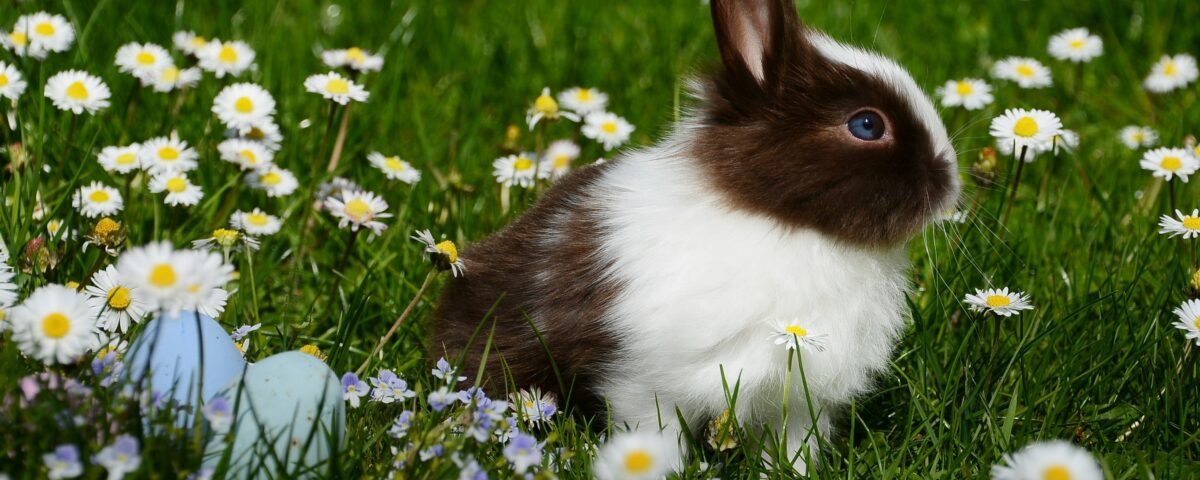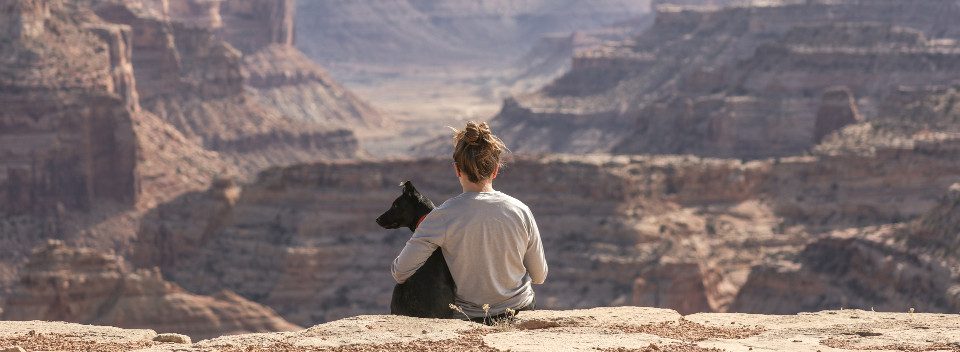
Adrenal Gland Cancer (Pheochromocytoma) in Dogs: Causes, Symptoms, Life Expectancy
November 13, 2023
Syncope fainting in dogs
February 12, 2024
Table of Contents
- Lifespan of Rabbits
- Factors Influencing Rabbit Lifespan – What Makes Some Rabbits Live Longer Than Others
- How to Extend a Rabbit’s Lifespan: What to do to help your rabbit live a long and happy life?
- Recognizing Signs of Ageing in Rabbits
- Common Health Issues Impacting Rabbit Lifespan
- Determining the Lifespan & Ensuring Quality of Life for Aging Rabbit
- Frequently Asked Questions (FAQs)
Lifespan of Rabbits
This question might not be as simple as it seems. There are several different species of rabbit, and within the common domesticated species, there are many different breeds.
In the wild, many rabbits live to only one or two years old, with many falling prey to predators like foxes, badgers, or birds of prey; dying to disease or injury; or starving to death. This is partly why rabbits are such prolific breeders, to ensure there are always plenty of rabbits being born to make up for those that die young. One textbook claims the oldest known wild rabbit, in Australia, lived to 7.6 years old.
In captivity, or as domesticated pets, rabbits tend to live a lot longer when well cared for. Most live to 5-12 years old. There are some record-breaking bunnies who have reached much older, such as Mick who was recorded as being 16 in 2019. Pet rabbit longevity is due to many factors, including access to veterinary care, disease prevention, a regular supply of food, no predation and a safe environment.
Factors Influencing Rabbit Lifespan – What Makes Some Rabbits Live Longer Than Others?
You might be thinking that 5-12 is quite a big variation, and you’d be right. Though the average pet bunny has a much longer life than a wild rabbit, the lifespan still varies.
Not all domesticated rabbits are built the same – from the tiny Netherland Dwarf to the Flemish Giant, there’s big variation. We aren’t certain if size affects a rabbit’s life expectancy, but if we assume there is similarity to dog breeds, giant rabbits may live shorter lives than small breeds. However, certain breeds are at more risk of genetic diseases that will affect their lifespan, such as dwarf rabbits having a greater risk of dental and tear duct issues. It may also be the case that ‘fancier’ rabbits that require specialist care may be more at risk of inappropriate husbandry from inexperienced owners that can lead to a shorter lifespan.
The reproductive status of a rabbit will affect their lifespan too – non-neutered rabbits (those with intact reproductive organs) are more likely to have certain diseases like uterine cancer, mammary cancer, and testicular disease. Neutering will prevent these conditions and likely result in a longer life, especially in does (females).
Finally, factors that an owner can control will heavily affect a pet rabbit’s lifespan. These include what the rabbit is fed, where they live, whether they are vaccinated, if they have been neutered, their stress levels, and many more factors. Let’s look into some of these in a bit more detail.
How to Extend a Rabbit’s Lifespan: What to do to Help Your Rabbit Live a Long and Happy Life?
If you want your rabbit to be around for as long as possible, there’s a number of factors to consider.
First is their nutrition
A rabbit’s diet should be predominantly (at least 80%) roughage – this means fresh grass or hay provided at all times. Roughage will keep their teeth at the correct length, ensure their guts are constantly moving, and help keep their faeces well formed. The remaining 20% or so can be pellets or green vegetables like celery, kale or herbs. Try and avoid sweeter vegetables and fruit – these should be kept as a rare treat. We do not recommend rabbit muesli. Fresh water should be available at all times too.
Next their environment
Rabbits should have a secure enclosure where they can rest, hide, sleep and stay warm – a wooden hutch works well for this. However, hutches are often small, so rabbits also need plenty of space to run around, ideally on grass so they can graze. Space to move around in keeps them mentally stimulated and prevents obesity. Rabbits can be kept indoors, but care must be taken to ensure all their natural needs are met. Ensure any environment is secure so they cannot escape, cannot be accessed by predators like cats or foxes, is kept clean and dry, and has nothing sharp or electrical your rabbit could harm themselves with. Bedding made from hay or straw is a must to keep them warm and soak up urine – replace this regularly.
Veterinary care is very important for pet rabbits
All pet rabbits should be vaccinated against Myxomatosis virus and Rabbit Haemorrhagic Disease virus (types 1 and 2, nowadays) – these terrible diseases can be spread from wild rabbits and are usually fatal. Luckily, vaccination protects rabbits almost entirely. Always ensure they are vaccinated yearly (check with your vet for their specific vaccination protocol). Rabbits kept outdoors should also be treated to prevent flystrike, especially in the warmer months. Flystrike is where flies lay eggs in your rabbit’s skin, resulting in their larvae (maggots) damaging the skin and it can be fatal if left untreated. A regular preventative protects them. Aside from these specific treatments, regular vet visits will help identify any subtle diseases your rabbit might have, such as dental disease or obesity. Often, the earlier a disease is addressed, the better the long-term outcome.
Finally, consider their social needs
Rabbits in the wild are social animals living in large groups. As pet owners, we should recognise this and try and keep rabbits in groups of at least two. This will enable them to exhibit natural behaviour like grooming, sleeping next to each other, eating together and more. These positive interactions will keep your rabbit happier, which will ultimately lead to a longer lifespan. We recommend neutering both rabbits to prevent fighting and unwanted pregnancies.
There are many other factors prospective rabbit owners should consider, but these are some of the most critical – we recommend speaking to your vet if you want more information.
Recognizing Signs of Ageing in Rabbits
Ultimately, even the best kept rabbit will start to age. As they get older, it is important to identify the signs of ageing (also known as senescence), as they may indicate problems you can address that we will discuss later.
General ‘slowing down’ is often the most common sign of ageing noted – rabbits may play less, move around less, look stiff or shaky, or sleep more. Alongside this, they may struggle to groom themselves or eat their faeces. Painful arthritis is often a big cause of these changes.
A rabbit may visually look different too, as their fur changes colour and goes grey or white. Some rabbits will also have a thicker or thinner coat as their age. Weight loss may be spotted too, which can be linked to a number of diseases. On the other hand, many older rabbits gain weight as they become inactive – obesity can result in serious health issues, so should not be ignored.
Some rabbits may start to lose their sense of hearing, vision or even smell. This might be hard to spot, but if they seem more skittish or are bumping into things, this might be why. As well as skittishness, some older rabbits may become more withdrawn, forget learned tricks, struggle to use the litter tray, or even become aggressive.
Many symptoms of old-age diseases are subtle, so we recommend older rabbits have more frequent health checks with their vet.
Common Health Issues Impacting Rabbit Lifespan
Find our 10 common rabbit disease and illnesses every owner should know about here.
Respiratory diseases are quite common in rabbits
Respiratory problems can result in fast or shallow breathing, sneezing and coughing, eye and nasal discharge, anorexia and a high temperature. Respiratory infections, foreign bodies and even cancers can all cause these signs. Some rabbits will have chronic respiratory infections (snuffles) that can result in general long-term unwellness.
Though respiratory disease can cause eye discharge too, other conditions can result in the eyes looking watery. These include eye infections, blockage of the nasolacrimal duct, dental disease, eye ulcers and certain parasites. A rabbit with eye disease should always have a thorough clinical examination. As with respiratory disease, chronic eye problems can be a sign of underlying disease that will reduce the overall health of your rabbit, so should be investigated.
On the topic of teeth, dental disease is one of the most common problems identified in pet rabbits
Unlike humans, a rabbit’s teeth never stop growing. To keep them at the correct length for chewing, a rabbit must have sufficient rough food, like grass or hay. Unfortunately, inappropriate diets are very common in rabbits, and result in the teeth growing too long, biting the cheek or tongue and causing painful wounds, pressing into the nasolacrimal duct and causing eye disease, tooth root abscesses, loss of teeth, and damage to the bones around the teeth. These serious symptoms can put your rabbit off their food, result in gut stasis and even death in extreme cases. Correcting overgrown teeth can be difficult, so preventing it with a suitable diet is very important. A poor diet can also lead to obesity, gut stasis, difficulties grooming, fly strike, and a host of other conditions.
Finally gut stasis
Ileus, or gut stasis, is a condition where a rabbit’s gastrointestinal system slows down or stops completely. A rabbit needs to be constantly digesting to keep themselves healthy, so gut stasis can be serious. Gut stasis can be caused by a number of conditions, including poor diet, obesity, dehydration, blockages, pain, stress, low exercise, overuse of antibiotics and many other factors. A rabbit with gut stasis may go off their food, be hunched over, have abnormal faeces, grind their teeth, look bloated or even die. Treatment should be prompt, and may include pain relief, motility agents, antibiotics, intravenous fluid therapy, and hospitalisation.
Determining the Lifespan and Ensuring Quality of Life for Aging Rabbits
As a rabbit ages, much of the same guidance from their younger years still applies: ensure they receive a good diet; they are seen regularly by a vet and are annually vaccinated; their environment is suitable; and so on. But as they age, you might want to consider implementing a few more changes to make their later life more comfortable. The age a rabbit is considered ‘elderly’ will vary, so ask your vet for advice if needed. Remember that larger rabbits are likely to be considered old at a younger age than smaller rabbits.
You should first consider adapting their environment to better suit an older rabbit
As we discussed above, osteoarthritis is quite common in older rabbits, and can result in reduced activity. It is important for weight-control and gut health that your rabbit remains mobile – pain relief from a vet is always advised, but you might also want to reduce the height they have to jump with little steps, provide lower litter trays, provide thicker bedding, or put down carpet on slippery floors.
The same basic diet rules should be kept up as a rabbit ages
Again, grass or hay should remain the predominant component. However, some older rabbits may benefit from having some pellets or nuggets designed specifically for their age – these foods are better formulated to provide nutrients at the right level for a less active rabbit. You may also need to reduce the number of treats you feed your elderly rabbit, to prevent them becoming obese. Water intake is important, and ensuring they drink plenty will keep their guts and urinary system healthy.
Older rabbits should still receive regular socialisation
Social time, both with a companion and with humans, is important so that they can still exhibit normal behaviour. If one of your rabbits sadly passes away, after a time of mourning, it is sensible to introduce a new companion for your remaining rabbit – rabbits always do better in pairs. You should also give your rabbit attention too, whether it’s playing with them, grooming them or just sitting with them. Remember they are older and may not like as much handling as before – if they seem reluctant to be touched, it might be a sign of pain.
Finally, as your rabbit ages, you should be monitoring them much more closely
Many of the diseases of old age have better long-term outcomes when they are identified early. We would recommend weighing your older rabbit at least weekly, monitor their water and food intake, check the cleanliness of their back end daily, and keep an eye on their activity level. You might also want to consider having more frequent vet checks to examine dental, heart and gut health. The frequency depends on the individual rabbit, but every 6 months is a good start.
Making the Tough Decision: End-of-Life Care for Rabbits
We hope that with the above advice, your rabbit can live a long and healthy life. Sadly, all pet rabbits will eventually become unwell, or painful, or just too tired, and your vet may recommend saying goodbye. This is a challenging time for any pet owner, and how you might like this to go ahead will depend on you. Here are some things you might want to consider.
If you are lucky enough to pre-plan your rabbit’s euthanasia, consider the location
While many rabbits must be put to sleep at the vets, some might be able to go peacefully at home in their own environment. This can be less stressful for the rabbit as they aren’t in an unfamiliar environment, and sometimes more pleasant for you. You could ask for this to take place inside or in the garden.
Even if you would like to (or have to) say goodbye at the vets, you can make it as comfortable as possible for everyone involved. If you can, discuss the process with your vet first, so you can make specific requests. Bring some food, water and bedding with you so your rabbit has something familiar. You can choose to be with your pet as they pass if you’d like, or say goodbye before and not see the process – either is acceptable. Please do whatever you are most comfortable with.
If your rabbit has a companion, consider having them present too
Most animals seem to understand what death is, and if your remaining rabbit has a chance to see your rabbit go to sleep, and say goodbye, we think it can minimise the ‘loss’ they might feel versus if their companion just doesn’t come home one day.
However saying goodbye goes for you, remember that the decision is most likely the kindest option for your rabbit. Vets will only put animals down if it is the right thing to do, so you should never feel guilty for ensuring your rabbit passes away peacefully with dignity.
Frequently Asked Questions (FAQs)
What factors affect a rabbit’s lifespan the most?
Nutrition, environment, access to veterinary care, and socialisation.
How can I tell if my rabbit is aging gracefully?
They still exhibit much of the same behaviour they did when they were younger
They are still active and can move well
Their appetite and thirst remain consistent
Their weight remains stable
They seem happy
Are there specific breeds known for longer lifespans?
We aren’t certain, but smaller rabbits may live longer than larger rabbits.
Some breeds with specific health conditions may have shorter lifespans.
What can I do to create a rabbit-friendly environment?
Ensure their environment is safe, secure and has plenty of space (ideally outside on grass).
Keep it clean, warm and dry.
Have soft bedding of hay or straw and clean it regularly.
How do I cope with the loss of a beloved rabbit?
Prepare in advance for the process if you can by discussing end of life care, the right time to say goodbye, and how it will work with your vet first.
Collect some fur, a collar, a paw print or other memento from your rabbit.
Consider planting a bush or tree where your rabbit or their ashes are buried.
Scatter their ashes somewhere your rabbit liked to go.
If you find you are really struggling with their loss, there are professional pet bereavement councillors who you can talk to.
Sources & Top-ranking articles:
BSAVA Manual of Rabbit Medicine, 2014
https://www.bluecross.org.uk/advice/rabbit/wellbeing-and-care/how-long-do-rabbits-live
https://supremepetfoods.com/blog/how-long-do-rabbits-live/
https://www.webmd.com/pets/how-long-do-rabbits-live
https://www.petmd.com/rabbit/care/evr_rb_how-long-do-rabbits-live
https://www.rspca.org.uk/adviceandwelfare/pets/rabbits
https://www.timeforpaws.co.uk/blogs/articles/how-long-do-rabbits-live
https://www.rspca.org.uk/adviceandwelfare/pets/rabbits/senior



